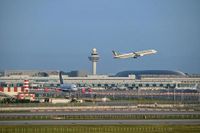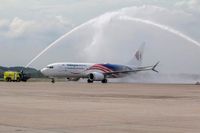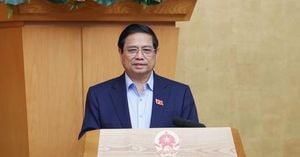SINGAPORE – Significant changes are coming for air travelers starting April 1, 2025, as several airlines across Asia implement new restrictions on the usage of power banks during flights. Singapore Airlines (SIA) and its low-cost subsidiary Scoot announced a blanket ban on the use and charging of power banks in-flight, while Malaysia Airlines, Firefly, and MASwings will enforce similar policies. The changes come in response to safety concerns following a series of cabin fires linked to overheating power banks.
The recent incidents that prompted this policy update mainly involved carriers such as Batik Air and Air Busan over the last three months. As safety becomes a growing concern, airlines are proactively implementing measures to mitigate risks associated with personal devices in the cabin.
With the implementation of the new rules, passengers can expect strict enforcement. Those who disregard the ban may face consequences, including warnings, fines, or even device confiscation. In extreme instances, passengers could be removed from flights upon landing or face a ban on future travel with the respective airline, according to experts. John Tan, a lead professional officer from the Singapore Institute of Technology, highlighted, "If the problem continues, penalties could include fines or confiscation of the device. In extreme cases, passengers might be removed from the flight once it lands, and repeat offenders could be banned from future flights." This sentiment was echoed by Caleb Sim, a senior lecturer at Republic Polytechnic, who noted the necessity of backing from civil aviation authorities for stricter regulatory enforcement.
National and international guidelines have already stipulated that lithium-ion batteries must be carried in the cabin rather than in checked baggage. Power banks with a capacity of up to 100Wh are permitted, while those between 100Wh and 160Wh require prior approval. Any power bank exceeding 160Wh is strictly prohibited on flights.
Support for the new restrictions appears to be generally favorable among passengers. Dylan Wong, a frequent traveler, emphasized the importance of safety over convenience: "For me, getting from one destination to another safely is more important than having a fully charged device." This view underscores a growing public awareness regarding the potential risks associated with airborne electronics.
While Singapore Airlines is banning in-flight usage entirely, the new guidelines will compel passengers to carry power banks with them at all times without storing them in overhead compartments. Charging devices during the flight, including during taxi, take-off, or whenever the seat belt sign is illuminated, is forbidden. Malaysia Airlines' updated protocol similarly restricts power bank usage to ensure they remain safely stowed while on board.
These measures, while raising concerns about passenger convenience, are primarily aimed at enhancing passenger safety, according to experts in the field. John Tan elaborated, "As new technologies such as personal devices and advanced systems become more prevalent, the industry is increasingly focused on managing risks," indicating a proactive approach to addressing potential safety issues. The rise of incidents involving overheating power banks has lent urgency to the need for greater vigilance and regulations in air travel.
According to the US Federal Aviation Administration, three cases of power banks overheating were recorded every two weeks in 2024, drawing attention from safety advocates and prompting these stringent guidelines. Notably, in 2016, airlines initiated bans on devices like the Samsung Galaxy Note 7 due to similar fire hazards, reinforcing the notion that this is not an isolated concern but a broader industry challenge.
Travelers relying on power banks for prolonged flights are expressing mixed feelings about the nuevo regulations. Some recognize the necessity of safety measures, yet they also worry about the implications of not having their devices powered during long journeys. Scoot, for example, offers in-seat power supply for economy travelers, which can cost between $5 and $11, prompting concerns about the additional expenses travelers may incur.
“When I reach my destination, I don’t want to have to worry about my phone dying as I navigate the airport, book transport or check in to my hotel,” said Darren Lee, an engineer who commonly flies Scoot. He points out that the need for power is substantial, especially for frequent travelers.
Despite these challenges, experts urge airlines to offer clear guidelines and ensure that power banks brought aboard are safe and effective. Caleb Sim suggested that airlines conduct thorough research to evaluate the brands and models of power banks involved in past fire incidents to maintain safety standards. Currently, there’s a lack of controls over the quality of power banks passengers bring. This situation can create a dangerous mix when combined with rising temperatures and changes in cabin pressure during flights.
Ultimately, as the aviation industry grapples with safety, the new restrictions represent a shift towards a more cautious approach, aimed at ensuring the well-being of travelers. These regulations demonstrate how airlines are adapting to challenges posed by modern technology while attempting to maintain a positive travel experience. Looking ahead, the aviation sector will need to balance safety, convenience, and passenger satisfaction as it navigates this new terrain.







